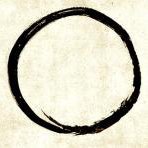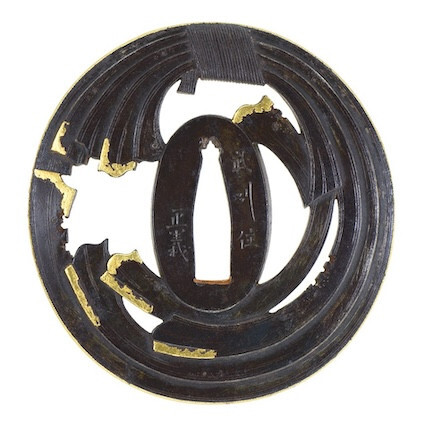-
Posts
392 -
Joined
-
Last visited
-
Days Won
1
Content Type
Profiles
Forums
Events
Store
Downloads
Gallery
Everything posted by FlorianB
-
Thank You for the input. It's an older piece, so patination should be old, too. At least it needs further investigation. Florian
-
I understand that tekkotsu appears in the rim area and consists of granular or linear embossed elements. In this case here we have flat dots all over the plate, which are gleaming in angular light, but are black in normal view. Florian
-
Hello all, examining one of my Tsuba I recognized tiny bright spots if light falls on them aslope. Those are scattered irregularly all over the surface. Sorry for the mediocre quality of my shot, but I hope You get the idea. Another picture of the same area in a steeper angel for comparison shows that these spots are no abrasions. Seeing such sprinkles on a blade I would call them „nie“, but on Tsuba, too? I haven’t seen this before. And does it tell something about the material or working process? Best, Florian
-
Hi Colin, it was just an idea. Indeed I haven’t considered the former value of these materials as Jean mentioned. BTW: Have there been models at all? Best, Florian
-
In my eyes the piece seems to be mere a model. Best, Florian
-
Please take into account that knowledge about Tsuba and their motives were very limited in 1922. There are several similar mistakes and misinterpretations in other catalogues at these times as well. BTW: A Tsuba (seen on guiseppepiva.com) reminded me to an „Oktoberfest“-motif several years ago. Cheers! Florian
-
Sorry to be a know-it-all: The correct name is Tsuno Daishi 角大師 (horned grandmaster). Here's an elder thread with examples of this fellow: Best, Florian
-
Hello Jens, I flipped through my books but I haven’t found a similar piece yet. However, Dale showed some already. I agree with his Ito attribution though these show often very fine lines but there are also some like Yours. The surface shows a fine structure by hammer finish (so-called tsuchime). Careful regular rubbing with a cotton cloth will enhance the patination of Your piece. Best, Florian
-
Hi Jens, this was quick! The Tsuba has wakizashi size (meant for short swords) A closer look shows no mokume surface as Peter suggested. I will do some research later. Best, Florian
-
Hi Jens, would You be so kind and give the dimensions? This means height, width and thickness both at the rim and at the nakago ana (the triangular center hole). More pictures in higher resolution would be helpful, too. My quick guess would be an average Tsuba made in Edo-period. There are different artists/schools which worked in kage-sukashi (negative silhouette) at this time. The motif of a goose (karigane) is frequently found on Tsuba, here combined with a swirl of water. Best, Florian
-
„Every single item from The Lanes Armoury is accompanied by our unique Certificate of Authenticity.“ ( thelanesarmoury.co.uk ) Here's one for a pair of menuki: Dealers certificate = a printed piece of paper - nothing to make a fuzz about. Florian
-
The whole Tsuba has a rustic appearance. The kidney-formed openings are typical for Shoami. Ko-Shoami is possible assuming the eyes would have been added later. I noticed in the enlargement file marks which could be a preparation for nunome zogan so IMHO Kyo Shoami seems to be more appropriate. At least there are two possibilities: #1: An Ko-Shoami work has been at a later date prepared for nunome zogan. #2: The work was done at Edo-times by a more rural workshop which lacks the refinement and standards of the capital studios. Best, Florian
-
Never saw this before. It looks like a modern amateurs work. Do I see correctly the front is flat and the back hollowed? Best, Florian
-
It was purchased in 1911, but this means not necessarily it was made at this point. However, the idea is intriguing, cubism combines different views on a motiv and thus plays with different shapes (triangels, too). But what is the motif here? I agree with Jean C. it is at least a collection of pattern maybe to present different possibilities how to decorate a surface. It reminds me to patterns seen on habaki. Perhaps it would be an idea to post it into Bruce’s thread: www.militaria.co.za/nmb/topic/32583-cat-scratch-habaki/ . Best, Florian
-
The discus shape (naka-daka) is typical for Edo Tsuba. On pre-Edo Tsuba frequently naka-kubo (rim thicker than seppa-dai) is to be seen. Tsuba with uniform thickness have been made through all ages and thus difficult to determine by shape alone. BTW: The fan shape (as I called it) is also described as inome (boars eye) or suhama (beach) by others. Don't know what's right. Best, Florian
-
Hello Henry, it would be helpful giving the dimensions of the Tsuba - height, width and thickness both at the rim and the seppa-dai. Some more pictures in different angles would be useful, too. My first impression was Edo-period (Genroku or later) and I agree with Jeremys and Brians explanations. The design with its clever combination of blossom and fan-shape (?) hints to a later interpretation of the Tosho-style. If it looks older in Your eyes it’s just because of a corroded surface resulting of careless treatment in the past. Nevertheless it would be worth recovering the patination. Best, Florian
-
Hi Robert, I was tempted to buy it for myself but after long consideration (at least too long) suddenly it vanished. So You got it, congrats! It’s a classical beauty and well done! Best, Florian
-
It’s the result of overestimation of papers. Today it seems every piece must have a certificate. In my eyes the necessity of those is in question anyway not to mention discussions about the outcome. The collectors should learn again to estimate the significance by own examination and in discussion with other collectors instead sticking to a paper. Best, Florian
-
Example for drawer handles on a traditional tansu (seen on https://www.van-ham.com/de/kuenstler/1/zweiteiliges-isho-kasane-dansu.html):
-
Hi Steve, I think the forms to the right and left are drawer handles plus rings, at the top and bottom maybe warabite (fern sprouts) facing each other. Best, Florian
-
It’s definitely the above shown music instrument. The misinterpretation may be caused by the adaption to the circle. Noshi strips are arranged more freely like this: (world.seiyudo.com/product/tu-010517/) Best, Florian
-
Hi, I found this picture in my photo collection: I think I've copied it from Aoi Art in January. The description says: Kyo Sukashi, 8.25cm x 8.50 cm x 0.53cm, Edo period, 67g There must be a Hozon paper for this piece, but I haven't copied it. Best, Florian
-
The nunome was a point that speaks against a chinese fake. So I was too hasty in my judgement. But I don’t know what to make out of this piece, it looks suspicious in my eyes and there are too many questionable details. Best, Florian
-
The alteration of the nakago ana is most unusual, never seen this before. Customarily a flattening is made on both sides by hammering, here it looks like carved out. I can’t see any sense for this. I stick to my impression that this piece was made in some Chinese workshop. The silence of the other board members tells it own tale. However, take it as it is and if You enjoy it - it’s all right. Next time maybe a better catch! Best, Florian
-
Hi George, sorry to be frank, but the carving seems a little bit crudely done. The modification around the nakago ana looks artificial to feign often usage. At least I’m not sure if it is Japanese at all. I hope, it wasn’t too expensive. Best, Florian











